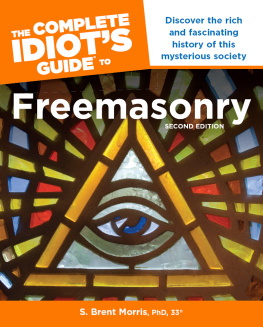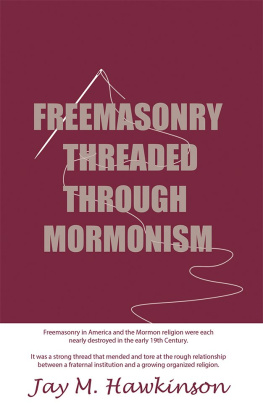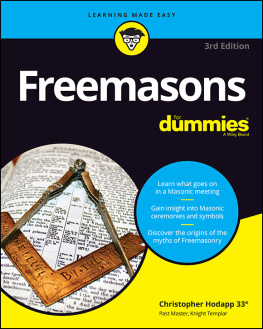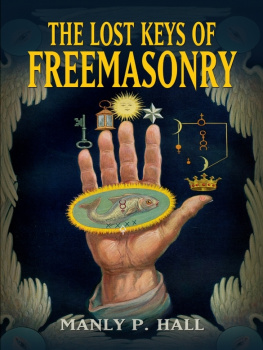MINERS, MARINERS & MASONS
MINERS, MARINERS & MASONS
The Global Network of Victorian Freemasonry
ROGER BURT
Emeritus Professor of History
University of Exeter
First published in 2020 by
University of Exeter Press
Reed Hall, Streatham Drive
Exeter EX4 4QR
UK
www.exeterpress.co.uk
Roger Burt 2020
The right of Roger Burt to be identified as author of this work has been asserted by him in accordance with the Copyright, Designs and Patents Act 1988.
British Library Cataloguing in Publication Data
A catalogue record for this book is available from the British Library.
Hardback ISBN 978-1-905816-16-3
Paperback ISBN 978-1-905816-24-8
ePub ISBN 978-1-905816-18-7
PDF ISBN 978-1-905816-19-4
To PACH
WITH LOVE
CONTENTS
2. Number of Members in Royal Arch Chapters Working in Cornwall Before 1900
3. Number of Members of Mark Mason Lodges Working in Cornwall Before 1900
4. List of Professions Given by Initiates in Thirteen West Cornwall Lodges: Arranged by Social Group
5. Managerial Positions in Cornish Mines Held by Members of Masonic Lodges in West Cornwall in 1883
6. Representatives from Thirteen West Cornwall Lodges Given Active Provincial Grand Rank, 18901895
7. The Secretaries and Treasurers of Some Cornish Ancient Order of Forester Courts: Showing Those with Masonic Affiliations
8. The Number of Annuitants of the Royal Masonic Benevolent Institution in London and Some Provinces in 1900
9. Masonic, Friendly and Benevolent Societies in West Cornwall: With Membership for 1886
10. Cornish Masons with Joint Membership of Fowey Lodge No. 977 and Court Treffry No. 4184, Fowey, 18631900
11. Maritime Members of the Lodge of Love & Honour No. 75, Falmouth, 18011900
12. Occupations of the Masters of the Lodge of Love and Honour No. 75, Falmouth, 18501900
13. Mariners Initiated and Joining Union Lodge No. 588, Floriana, Malta, 18601869
14. Minutes of the Board of the Lodge of Benevolence, UGLE Library and Museum Maritime Petitions for Relief, 18561859
15. The Number of Lodges in Coastal and Inland Provinces, 1900
16. Lodge members who held senior managerial positions in copper, tin and lead mines in Cornwall and Devon, 18591900
17. Some Members of Aberystwyth Lodge No. 1072 Involved in the Management of Cardiganshire Lead Mines in the 1860s
18. Some Members of Overseas Lodges Joining Cornish Mining Lodges, 18521901
19. Members of Foreign Lodges Who Visited Tregullow Lodge, St Day, 18641901
20. The Foundation of English Constitution Lodges in Ballarat and Bendigo, Victoria, Australia
21. Some Members of Domestic English Constitution Lodges Joining Gold Fields Lodge, Johannesburg, 18931898
This book might look like an exercise in gender studies and in one sense it is. It is exclusively about mature men endeavouring to improve themselves and create some level of security for their wives and families in an insecure Victorian world. But it was not intended to be that. This was an old-fashioned research project that gradually unfolded as it went along and ended in a place which was far from where it started. Parts of the story were published along the way, but this is the story of the journey as a whole. It is an economic historians attempt to make sense of a complex social issue: it started with only one vague question relating to information flows in a small, out-of-the-way part of England and gradually moved on to a wider international and global stage. It had no initial understanding of the unexpectedly wide range of primary and secondary sources available, and it had no preconceived idea of an audience for the final outcomes of the research or how it might be promulgated. It is therefore very much the work of a late-stage and retired academic historian rather than one of the new school of closely focused and tightly constrained members of that profession. Whatever the strength of its final conclusions it has certainly turned up a wide range of important and previously little noticed issues.
The initial question was conceived in the authors familiar terrain of British mining history. In particular, how did Cornish miners, mine managers and investors network so well in finding jobs and making profitable investments, at home and abroad, in a notoriously high-risk industry? Religion was known to be a powerful connecting force but created few social contexts to promote business activity. Friendly societies and fraternal organisations, however, were well established in the region and brought together men, and sometimes women, from across a wide social spectrum. Of those organisations, the one that was most likely to be used as a vehicle for economic networking was Freemasonry, since it traditionally has been regarded as particularly middle-class and business-friendly. Fortunately, and perhaps surprisingly for a reputed secret society, it was found to have more complete, detailed and available membership records than any of the others. It became the focus of the research and data was extracted on the membership of Masonic lodges in the mining-dominated western part of the county. This demonstrated that the lodges encompassed the full range of professional, mercantile, trade and public occupations that were conducted locally, and created regular opportunities for the exchange of views and ideas through regular dining and other social interactions. Random comparisons with other lodges elsewhere in the UK demonstrated that the Cornish experience was not uncommon.
Understanding of the scope of Masonic activity led to a second set of questions about why men joined the Order, what it offered them, and how it differed from other benefit and fraternal societies. The answers were many and various but one stood out as being particularly importantthe support and facility that membership offered to those with mobile occupations. Once a member of one lodge, a Mason could look for help and support from all lodges and Masons everywhere. At a time of economic crisis in Cornwall, Masonic membership was particularly attractive to migrating miners, and the coastal port lodges were popular for large numbers of mariners, either locally based or simply sailing by. To explore what was on offer in more detail, attention was turned to the scale, nature and scope of Masonic charitable assurance and what form of welcome arriving Masons might receive in distant and foreign lodges.
These questions were first directed to the help and support that Freemasonry offered to mariners, but the main focus returned to miners and managers. The research was initially directed to the structure of lodge membership in frontier mining districts of the United States, which was one of the primary destinations for Cornish labour and managerial expertise. California, Nevada and Montana featured in this enquiry with their lodges demonstrating important support and networking opportunities for new arrivals, and significant advantages for integration into the local host community. The Masonic lodges and their members were also shown to have played leading roles in early community development and the construction of social capital as well as becoming highly influential across a wide range of regional and national affairs. To ensure that this was not simply an American phenomenon, similar analysis was conducted for lodges in the new mining districts of South Africa and Australia, which produced comparable results.








